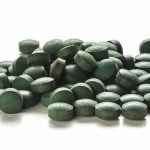Home safety has never been more essential. With the rise of viral infections, effective disinfection practices can protect your loved ones and create a healthier living environment. This guide offers valuable tips and innovative strategies for keeping your home clean and safe. Discover how simple adjustments to your cleaning routine can make a big difference in safeguarding your space, ensuring you foster both comfort and well-being in every corner of your home. Let's explore these practical solutions together.
Understanding Viral Infections and Transmission
Viral infections are caused by microscopic organisms that invade living cells, leading to various illnesses. These infections can range from mild, like the common cold, to severe, such as influenza. Understanding how these infections spread is crucial for managing health risks, particularly in household settings.
Also to see : Transforming Cancer Care: The Impact of Integrative Medicine Techniques on Treatment Success
Transmission statistics reveal that viral infections often spread rapidly within homes. This is primarily due to close contact among family members and shared spaces. For instance, studies indicate that the transmission rate of viruses like the flu can be as high as 20% to 30% within a household. Recognizing these statistics helps in implementing effective preventive measures.
Identifying high-risk areas in the home is essential for reducing viral transmission. Common hotspots include kitchens, bathrooms, and living rooms, where people frequently gather and touch surfaces. Regular cleaning and disinfection of these areas can significantly lower the risk of spreading infections. Additionally, encouraging good hygiene practices, such as handwashing and using tissues, further mitigates household risks.
Also to read : Unlocking Focus: Do White Noise Machines Enhance Concentration for Individuals with ADHD?
By understanding these dynamics of viral infections and focusing on transmission statistics, individuals can better protect themselves and their families. This proactive approach not only safeguards health but also fosters a safer living environment.
Effective Disinfection Methods
In the battle against viral infections, employing the right disinfection methods is critical. Various approaches can be utilised, ranging from chemical to natural solutions. Chemical disinfectants, such as bleach and alcohol-based cleaners, are potent and effective in eliminating pathogens. However, they can be harsh on surfaces and skin. Natural alternatives, including vinegar and essential oils, offer a gentler approach but may require more frequent application and longer contact times to achieve similar results.
Establishing cleaning protocols is vital for consistent and effective sanitization. Begin by identifying high-touch areas, such as doorknobs and light switches, and incorporate these into your routine. Ensure that all cleaning materials are readily available and stored safely. Regularly update protocols to adapt to emerging health guidelines.
For effective sanitization techniques, follow a systematic approach:
- Clean surfaces with soap and water to remove dirt and debris.
- Apply the chosen disinfectant, ensuring it remains on the surface for the recommended contact time.
- Rinse and dry surfaces to prevent residue build-up.
By understanding and implementing these methods, households can significantly reduce the risk of viral transmission, creating a healthier environment for all occupants.
Recommended Disinfection Products
Selecting the right disinfecting products is essential for maintaining a healthy home environment. Effective products often contain active ingredients like sodium hypochlorite, found in bleach, or quaternary ammonium compounds, which are known for their pathogen-killing properties. These ingredients are highly effective in eliminating viruses and bacteria on various surfaces.
When using chemical disinfectants, safety is paramount. It is crucial to follow the manufacturer's instructions to avoid potential hazards. Ensure proper ventilation during use, and wear protective gear like gloves if necessary to prevent skin irritation. Keep all safe cleaning supplies out of reach of children and pets to prevent accidental ingestion or exposure.
For those seeking eco-friendly options, non-toxic cleaning supplies are available. Products with natural ingredients, such as hydrogen peroxide or plant-based formulas, offer a safer alternative while still providing effective disinfection. These options often come with fewer environmental impacts and are less harsh on surfaces and skin.
To choose the most suitable products, consider the specific needs of your household. Evaluate the product effectiveness by checking for EPA registration or certification, which indicates proven efficacy against viruses and bacteria. Balancing effectiveness with safety and environmental considerations will ensure a comprehensive approach to maintaining a clean and healthy home.
Common Areas to Disinfect Regularly
Maintaining a clean home environment involves focusing on high-touch surfaces that are prone to harbouring germs. These include doorknobs, light switches, and remote controls, which are frequently used by multiple people. Regular disinfection of these surfaces is crucial to prevent the spread of viruses and bacteria.
Each room presents unique challenges and opportunities for room-specific cleaning. In the kitchen, countertops and appliance handles should be disinfected after meal preparation. Bathrooms require attention to faucets and toilet handles, while in living areas, focus on cleaning shared devices and furniture surfaces.
Implementing preventive measures can further enhance hygiene in common areas. Encourage family members to wash their hands before touching communal items and to use tissues when sneezing or coughing. Placing hand sanitiser in strategic locations can also promote regular use.
By identifying and regularly disinfecting high-touch surfaces, employing room-specific cleaning strategies, and adopting preventive measures, households can effectively reduce the risk of viral transmission. This comprehensive approach not only safeguards health but also contributes to a more pleasant living environment.
Maintaining a Clean and Safe Environment
Creating a healthy living space requires ongoing cleaning routines that are both effective and sustainable. Establish a regular schedule for cleaning high-touch surfaces and shared spaces to minimise the risk of viral transmission. Consistency is key; daily or weekly routines ensure that cleanliness is maintained without overwhelming effort.
Incorporating essential hygiene tips into daily life can significantly enhance these efforts. Encourage family members to wash their hands frequently, particularly after returning home, before meals, and after using the restroom. Using tissues when sneezing or coughing and disposing of them properly prevents the spread of germs.
Ventilation and air quality play a crucial role in maintaining a safe environment. Proper ventilation reduces indoor air pollutants and helps prevent the accumulation of airborne viruses. Open windows regularly to allow fresh air to circulate and consider using air purifiers to improve air quality. This is especially important in crowded or poorly ventilated areas.
By developing structured cleaning routines, following essential hygiene practices, and prioritising good ventilation, households can effectively safeguard their health. These measures not only protect against viral infections but also contribute to a more pleasant and healthy living environment.











